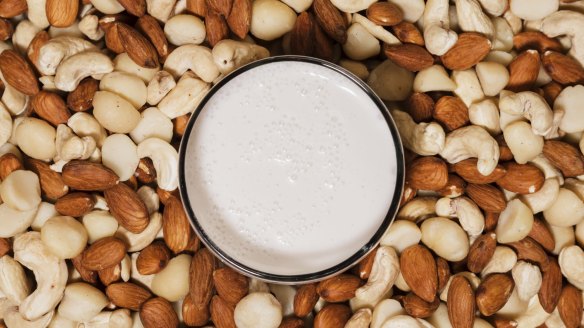Explainer: What's the deal with ... mylk?

Non-dairy milks are taking over our cafes. So what are they, and should we be drinking them?
What is it?
Whiz cereals, nuts, legumes or seeds with water, strain the mixture to create a white liquid and there's your non-dairy alt-milk. Almond, soy, rice and coconut are the most prevalent; oat, macadamia, hemp and sesame also have their fans.
Y spell it like that?
To show that it's different from dairy drinks and to sidestep the ire of milk producers who want the word all to themselves.
Is it better for me?
No, unless you're coping with an allergy. Alt-milks are usually less nourishing than milk and often have added sugar (and sometimes oil). Dairy milk is rich in protein, soy isn't bad, but nut and rice milks have barely any. They may be fortified though – read the label.
Soy it ain't so
In the European Union and Canada it's illegal to use the word "milk" to describe soy or other non-dairy drinks. Australia doesn't have such regulations, though the National Party and farmer groups are lobbying for them.
Y would I?
If you're lactose intolerant or vegan, cow's milk is not your friend, so you may prefer alternatives on your cereal, in your caffe latte and in your baking. Mylk can be more environmentally friendly than dairy but it depends how each is produced – almonds, for example, are water hungry, and you have to wonder what happens to all the pulp.
Did you know?
It's easy to make mylk at home. First, locate the nipple on your almond. Nah, not really. Soak your plant products in cold water for at least two hours or overnight. Add water to make it four parts liquid, one part solids. Blend, then strain through a muslin cloth: there's your mylk, mate. Use the pulp in bliss balls, as a bath scrub, or dry it out to use in baking.
The best recipes from Australia's leading chefs straight to your inbox.
Sign up